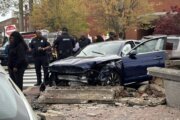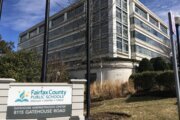Disaster medicine is a specialization within the medical field that has evolved since the 1980s and combines acute medical care, disaster preparedness, public health, humanitarian services and prehospital emergency medical services.
So, what constitutes a disaster? Disasters can stem from natural causes, such as fires, earthquakes, hurricanes and tornadoes. Disasters also include mass casualty events like bombings and shootings. Further, disasters can be intentional or accidental releases of chemical, biological, radiological or nuclear substances.
Recent incidents where disaster medicine was in action include the COVID-19 pandemic — when many hospitals were over capacity — and the ongoing humanitarian crisis in Ukraine.
Many doctors from all specialties regularly respond to and support disaster relief operations. Emergency medicine physicians specifically gain training in disaster medicine during their residency programs, and they can choose to further pursue a fellowship in disaster medicine after medical school.
Disaster Medicine Work in Different Contexts
Dr. Jarone Lee, a critical care and emergency medicine physician at Massachusetts General Hospital, is a medical officer of a national disaster medical assistance team. DMATs are part of a rapid-response effort that sends out self-sufficient federal medical teams to areas after a disaster. They deploy with doctors, nurses, respiratory therapists and mental health specialists.
“We typically set up a field hospital in a tent and then start treating patients like we would in a hospital-based emergency department,” Lee says.
[READ: 4 Ways Premed Students Can Make an Impact in Nonclinical Settings.]
“Hurricane Irma in 2017 destroyed the hospital and health care infrastructure in the Florida Keys,” he recalls. “Soon after, our team was sent in and we set up a field hospital to care for the local population until the local hospital was able to reopen. We treated everything from disaster-related trauma injuries to providing vaccinations. In total, our team was deployed for about three weeks.”
Lee also was deployed to Alaska during one of the COVID-19 surges to support two hospitals overwhelmed by COVID-19 patients.
“I helped care for the additional COVID patients who were admitted to the hospital,” he says. “Many of us substituted in for a physician or nurse so that they could get much-needed rest. We also helped with their public health operations by staffing COVID vaccination sites across the city and checking in on quarantined patients at home.”
A newer avenue for doctors to help with disasters without leaving their homes is through disaster telemedicine programs. For example, the National Emergency Tele-Critical Care Network was created to support rural, hard-to-reach, critical-access hospitals during the pandemic.
“NETCCN allowed us to support multiple overwhelmed hospitals across the nation through disaster telemedicine,” Lee says.
[Read: What Medical School Hopefuls Should Know About Types of Doctors.]
Lee became involved with disaster relief as a premed, when he volunteered with the American Red Cross Disaster Action Team. As a nonclinical volunteer, he helped disaster victims with paperwork, housing, clothing and food.
“I encourage all premeds to get involved — medical training is important but not necessarily needed,” Lee says. “As physicians, we are a key component but also part of a larger coordinated medical response with multiple team players. For example, many of our DMAT team members are not clinicians. To be effective in an austere disaster setting, we need team members with leadership, logistics, operations, security, safety and communication expertise.”
To apply the lessons he learned from disaster telemedicine, Lee co-founded Health Tech Without Borders, a global nonprofit organization that supports telemedicine consults to Ukrainians. HTWB has supported more than 40,000 telemedicine “visits” since the start of Russia’s invasion of Ukraine, working alongside the Massachusetts General Hospital‘s Center for Global Health, the World Health Organization and the Ukrainian Ministry of Health, HTWB delivers virtual medical education to Ukrainians.
How Premeds Can Get Involved With Disaster Medicine
Premed students do not need special licenses or training to get involved with disaster medicine efforts. Nonprofits and other organizations will offer training if you need to develop specific skills.
Here are ways some ways premeds can find disaster medicine opportunities:
— Volunteer during a disaster with nonprofits such as the American Red Cross Disaster Action Team and the federal Medical Reserve Corps.
— During public health emergencies, your city, county or state may create public health corps that you can get involved with. Many premeds volunteered for these groups during the pandemic, conducting contact tracing and responding to the public’s COVID-19 questions.
— Volunteer abroad during international disasters. Many premeds join through international nongovernmental organizations and church trips.
— Consider getting an EMT license or taking a course in emergency management.
[Read: What to Do With a Homeland Security or Emergency Management Degree.]
Disaster Medicine After a Philippines Catastrophe
During my Fulbright scholarship as a premed, I was living in Manila, Philippines, in 2009 when one of the most devastating typhoons in recorded history — tropical storm Ondoy followed quickly by typhoon Pepeng — directly hit Metro Manila. Eighteen inches of rain fell in 24 hours, causing massive flooding, destruction and hundreds of deaths.
I remember walking outside with flood waters reaching my chest. Cars floated in the streets while citizens desperately waited for help on top of roofs. For days, I stayed on high ground, getting electricity only through generators. Once water levels subsided and it was safe to travel outside, I volunteered for disaster relief efforts in my community.
I wanted to assist in any way I could. I found avenues to help through Ateneo de Manila University, local governments and health care teams. My first days volunteering revolved around organizing first-aid kits and giving supplies to medical teams. I also distributed food, water and clothing to citizens whose properties were destroyed during the flood.
Then I began working with local health centers on public health campaign efforts. For anyone who suffered a wound, we administered tetanus vaccines. I also worked with infectious disease doctors to educate the community about infectious diseases, including leptospirosis, diarrheal diseases and other water-borne illnesses.
In the following weeks, I joined city and national disaster preparedness meetings and saw the importance of coordinated government planning for natural disasters.
That was my first experience at the epicenter of a large-scale disaster, and I gleaned more insights about the roles of the government, public health departments and doctors. While we cannot plan for spontaneous natural disasters, my advice to premeds is to help out with whatever tasks are needed at the time.
More from U.S. News
What to Do While Awaiting a Medical School Decision
Popular Postgraduate Fellowships for Premed Students
How to Decide Where to Apply to Medical School
Disaster Medicine: What Premed Students Should Know originally appeared on usnews.com







